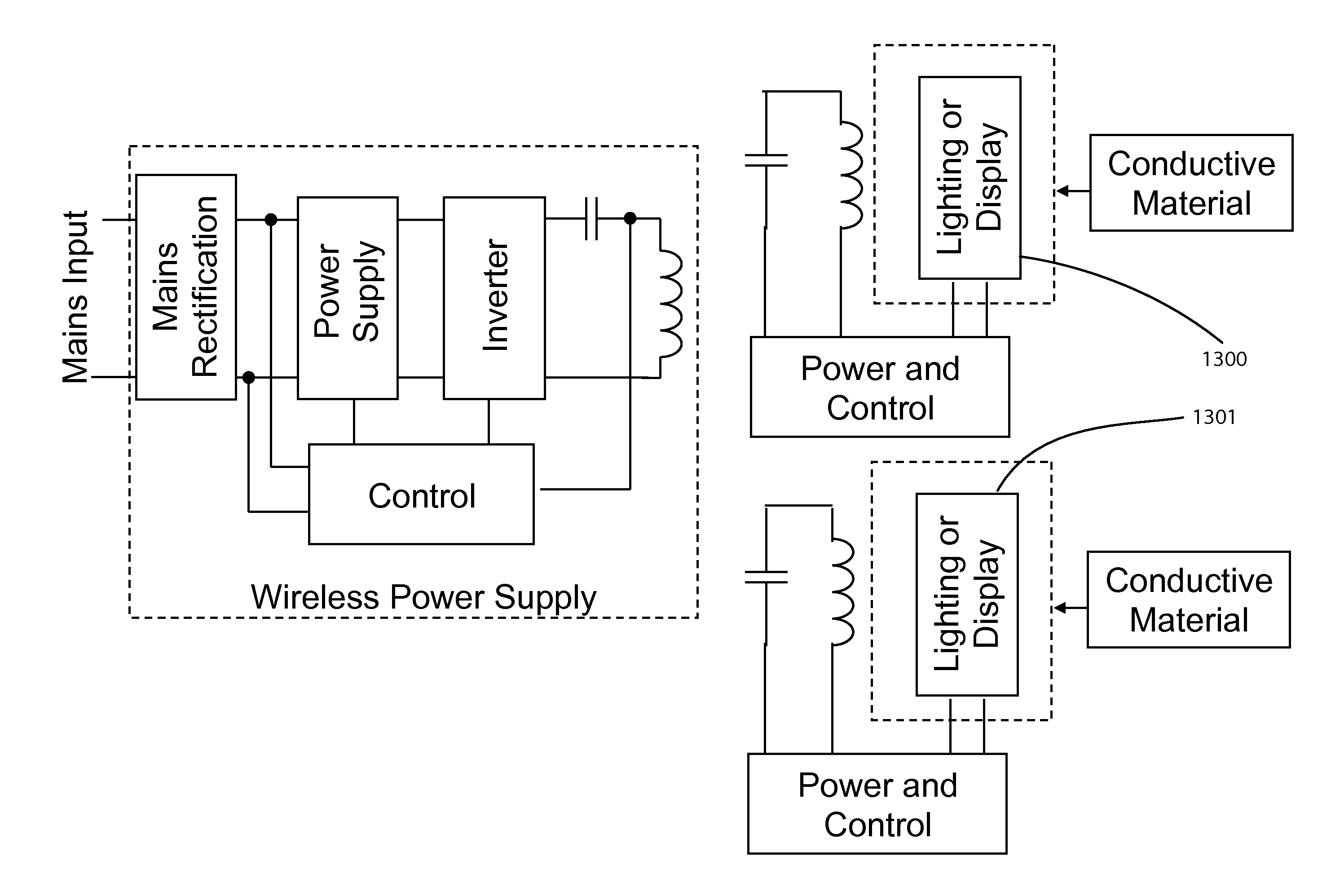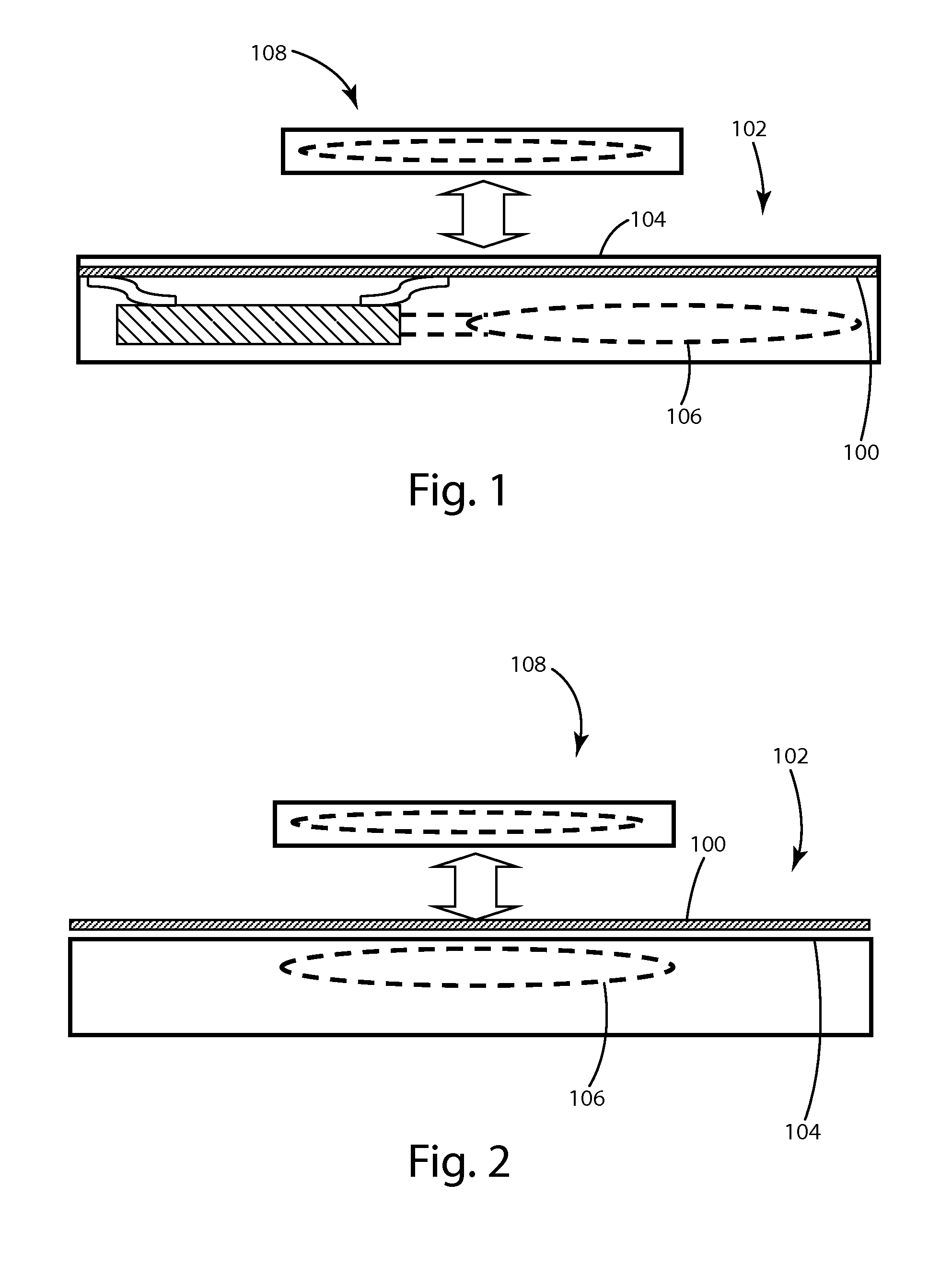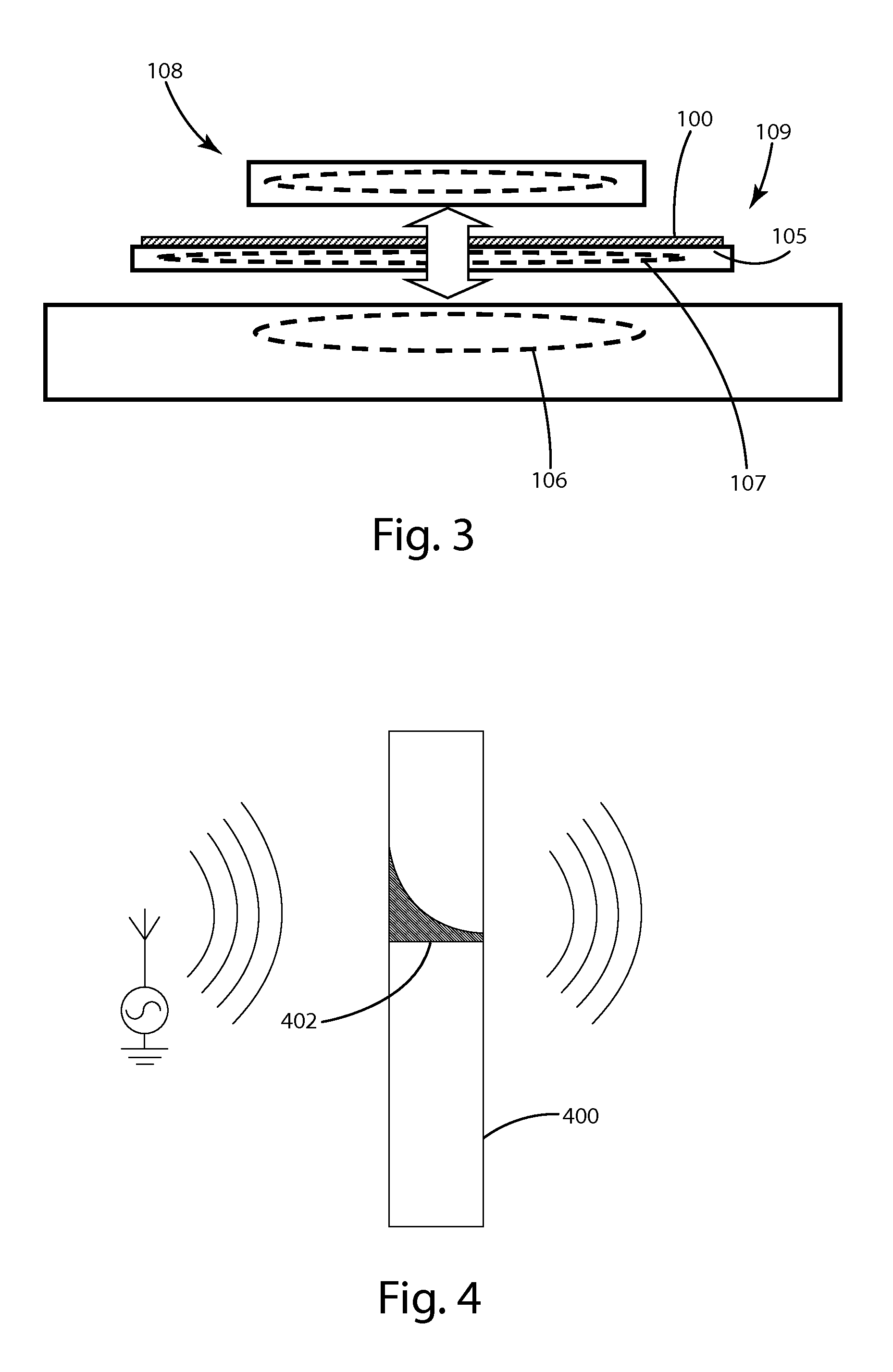Wireless power transfer through conductive materials
a technology of conductive materials and wires, applied in the direction of battery overheat protection, safety/protection circuits, transportation and packaging, etc., can solve the problems of significant limitations on the types of electric and electrical components, and the use of conductive materials in the vicinity of wireless power supplies
- Summary
- Abstract
- Description
- Claims
- Application Information
AI Technical Summary
Benefits of technology
Problems solved by technology
Method used
Image
Examples
Embodiment Construction
I. Overview
[0055]The present invention is generally directed to electrical components with conductive material incorporated into the electromagnetic field path of a wireless power system. The conductive material is configured to be sufficiently thin that it does not cause unacceptable heat gain or power loss when wireless power is being transferred. As schematically represented in FIGS. 1-3, the electrical components may be disposed in essentially any location within the flow path of the electromagnetic field from the wireless power supply to the remote device. For example, as shown in FIG. 1, the conductive material 100 may be disposed in a wireless power supply 102 below the power transfer surface 104. As another example, shown in FIG. 2, the conductive material 100 may be disposed above the power transfer surface 104 of the wireless power supply 102. In this embodiment, the conductive material 100 may be secured directly atop the power transfer surface 104 or may be separate and ...
PUM
| Property | Measurement | Unit |
|---|---|---|
| thick | aaaaa | aaaaa |
| temperature | aaaaa | aaaaa |
| temperature | aaaaa | aaaaa |
Abstract
Description
Claims
Application Information
 Login to View More
Login to View More - R&D
- Intellectual Property
- Life Sciences
- Materials
- Tech Scout
- Unparalleled Data Quality
- Higher Quality Content
- 60% Fewer Hallucinations
Browse by: Latest US Patents, China's latest patents, Technical Efficacy Thesaurus, Application Domain, Technology Topic, Popular Technical Reports.
© 2025 PatSnap. All rights reserved.Legal|Privacy policy|Modern Slavery Act Transparency Statement|Sitemap|About US| Contact US: help@patsnap.com



